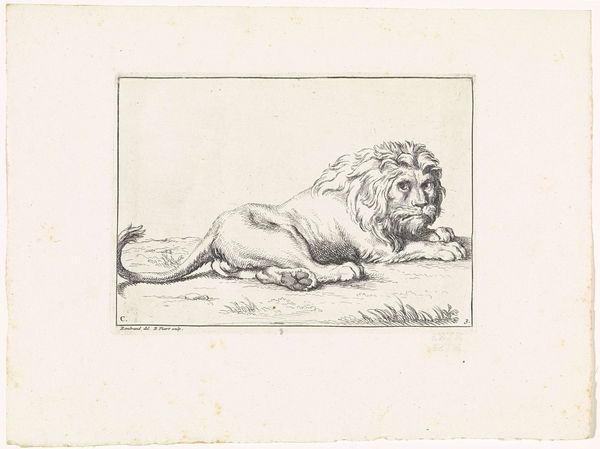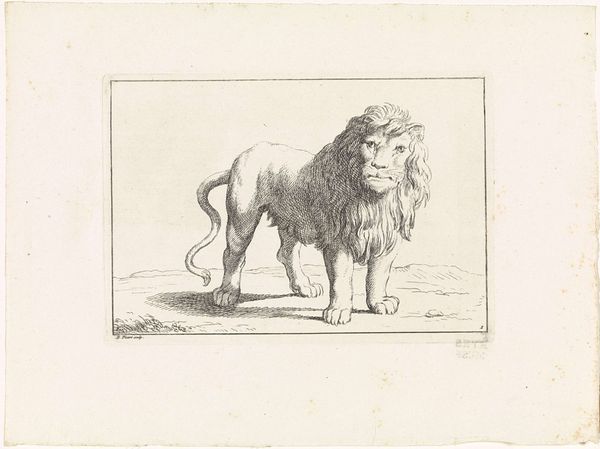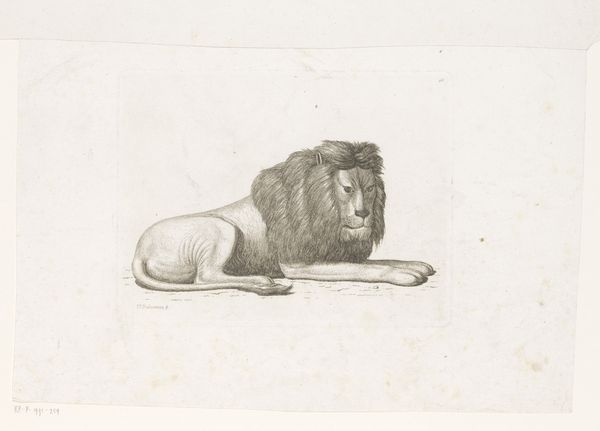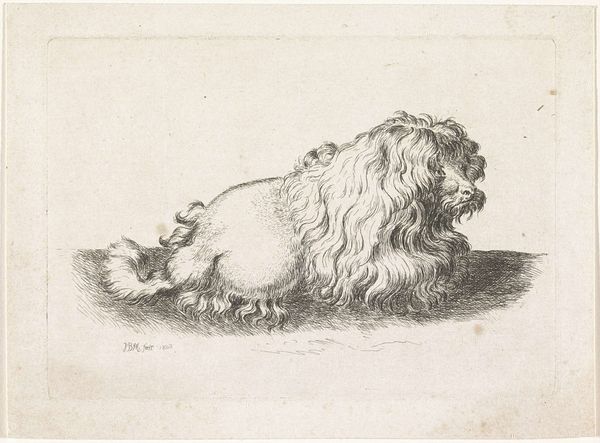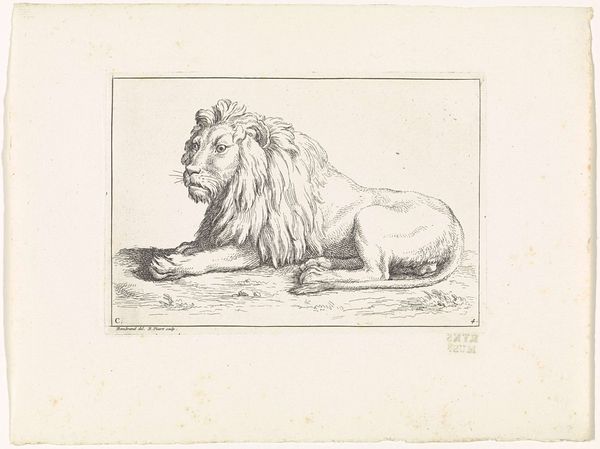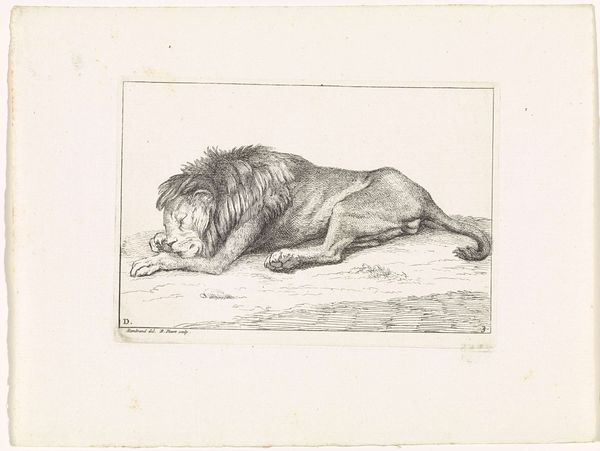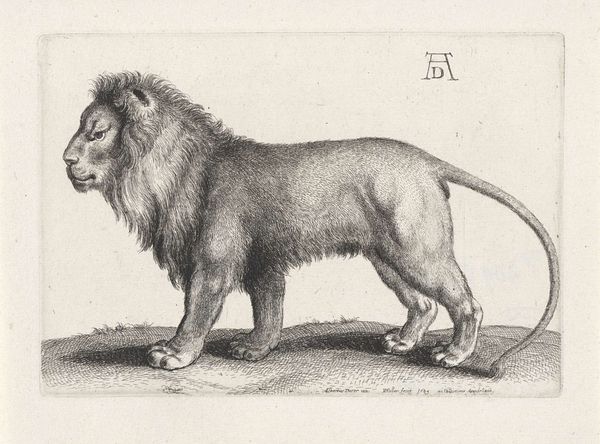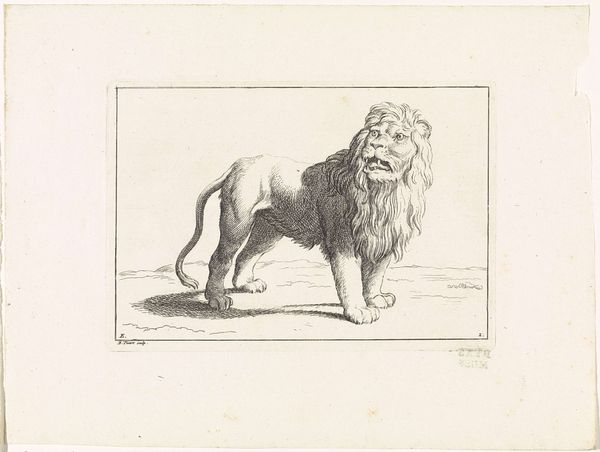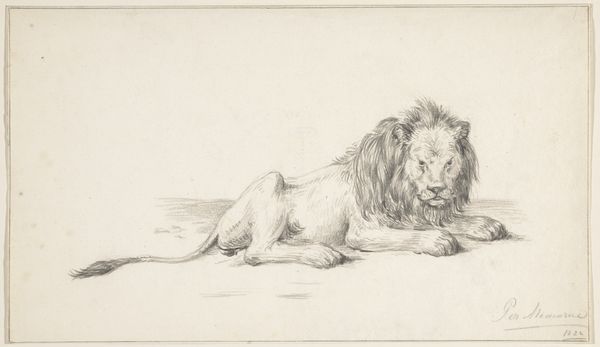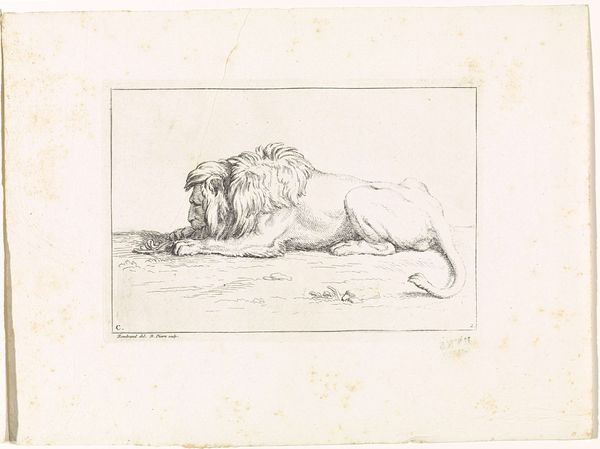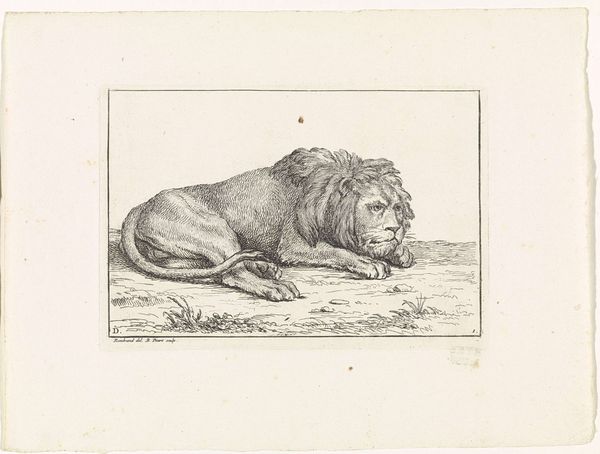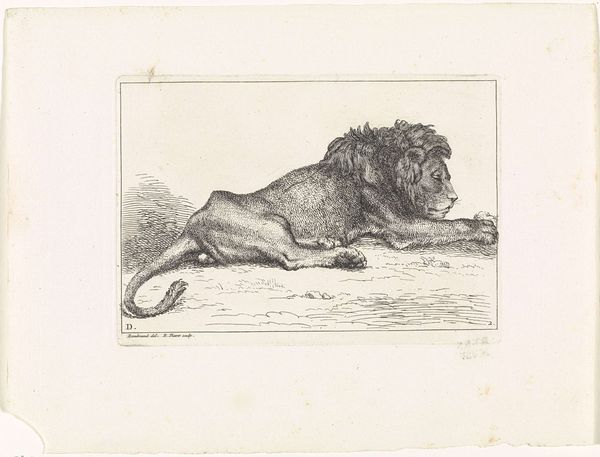
print, etching
#
baroque
# print
#
etching
#
figuration
#
line
Dimensions: height 94 mm, width 127 mm
Copyright: Rijks Museum: Open Domain
Curator: Good morning. Editor: We're looking at Wenceslaus Hollar's "Liggende leeuw" from 1645, an etching currently at the Rijksmuseum. The lion has such an unusual and direct gaze, but his posture seems so relaxed. How do we interpret this curious juxtaposition? Curator: Well, considering the 17th century's fascination with natural history and the power dynamics of the era, it’s more than just a portrait of a lion. Hollar was working in a time where the aristocracy used imagery of animals, especially lions, to signify strength, dominion, and their supposed natural right to rule. Does knowing that shift your understanding? Editor: It definitely adds another layer. So the relaxed pose isn’t necessarily about the lion’s comfort, but potentially about the confidence and unchallenged power that the aristocracy wanted to project? Curator: Precisely. Prints like this were often circulated among the upper classes, reinforcing and normalizing their authority. Consider where this print might have been displayed - perhaps in a private study or library, subtly reinforcing a specific social order. The context in which an artwork exists is critical to interpretation. Does it perhaps alter your initial sense of the piece? Editor: Absolutely, it’s much more than a simple depiction now. The lion, through the lens of cultural and social context, becomes an emblem of power dynamics at play during that period. Curator: It’s fascinating how socio-political structures inform art, isn’t it? And equally intriguing how art can, in turn, shape those structures. Editor: Indeed. I'll certainly look at seemingly straightforward images from this era with a different eye going forward! Curator: And I appreciate you encouraging me to consider what messages about class and power are being reinforced by its display in museums like this one!
Comments
No comments
Be the first to comment and join the conversation on the ultimate creative platform.
